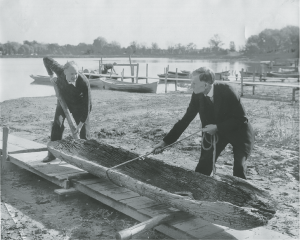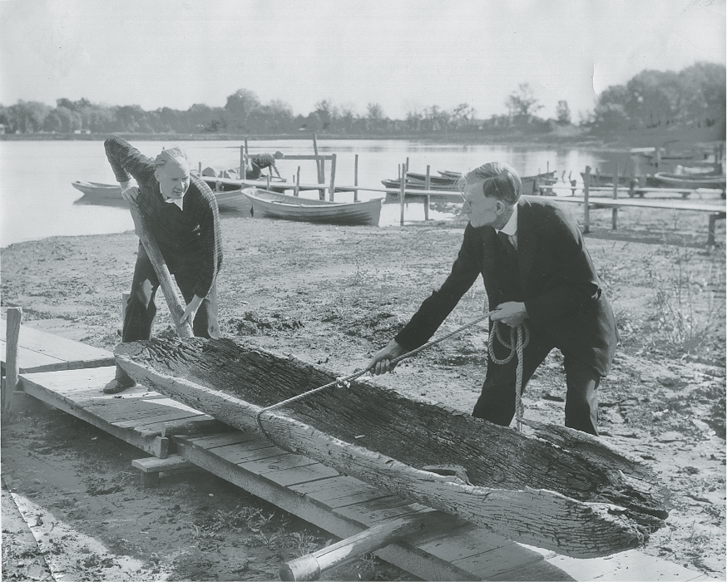A rare artifact was pulled out of Lake Minnetonka’s North Arm Bay in August 1934 by Helmer and Arthur Gunnarson, sons of Gustave A. Gunnarson. It was an extremely dry summer, with the lake’s water level seven feet below its ordinary high water mark, resulting in a receded shoreline. The Gunnarsons were building an extension to their dock and couldn’t pound in one of the posts. Thinking they had hit a rock or log about 12-16 inches down, they started digging through the silt and mud, and they pulled out a well-preserved Native American dugout canoe. More than 80 years later, radiocarbon testing dated the ancient watercraft to be about 1,000 years old—the oldest dugout canoe ever found in Minnesota.

“The dugout canoe was probably the first type of canoe made by indigenous groups across North America. It was constructed by selecting a tree of suitable size, which was then chopped or burned down at the base. The top of the tree would then be cut off, and the outside roughly shaped, while the inside was carefully burned and removed. Once the canoe was the desired size, many holes were drilled through it so as to gauge the thickness of the hull. Once the desired thickness had been reached, the holes were plugged in with wooden pegs. The canoe was then filled with hot water to soften the wood and make it more pliable. The sides of the canoe were stretched apart at the top and held apart by shaped rods called thwarts.”
Monk, Kimberley E. (1999). “The Development of Aboriginal Watercraft in the Great Lakes Region,” The University of Western Ontario Journal of Anthropology: Vol. 7: Iss. 1, Article 9.




